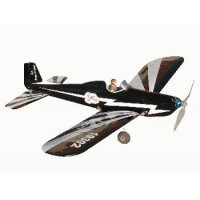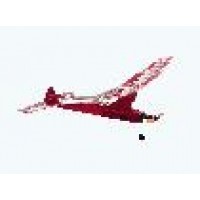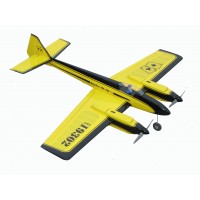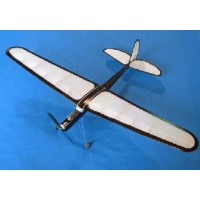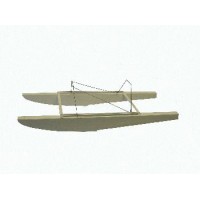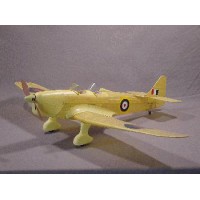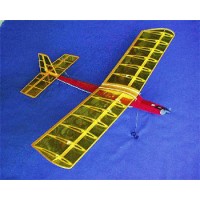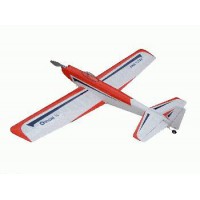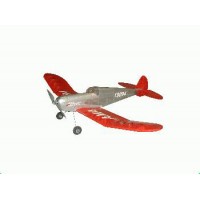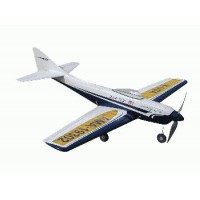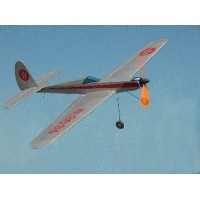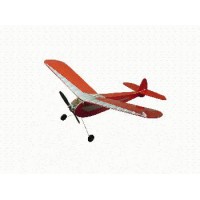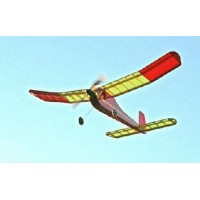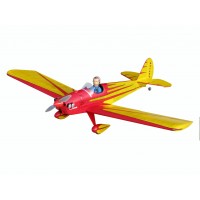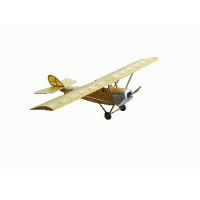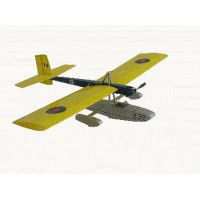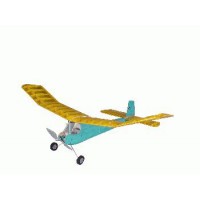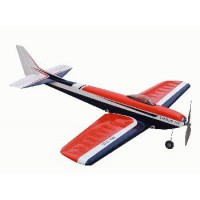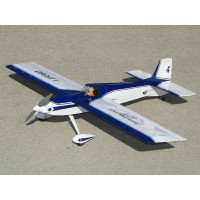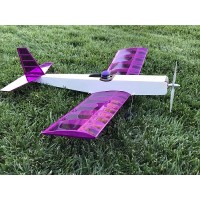Your shopping cart is empty!
Welcome visitor you can login or create an account.
Park Flyers
Prior to the Astro-Hog, by Fred Dunn and published in the April 1958 issue of MAN, radio controlled models were all high wing designs. Consensus of the R/C flyers at the time was that low wingers were doomed and would never be suitable for R/C use. B..
$127.00
This 1949 Frank Ehling design, with a 35" span and 159 sq. in. area. At 8.8 oz and a wing loading of aroud 8oz /sq.ft this is a perfect small field model to practice your Texaco thermal hunting skills at the park. Original..
$51.00
The original Duelist was designed by Dave Platt in 1974 for 2 Super Tiger 23 engines and became a Pica kit. Later Dave did a kit of the MkII version, published in the May 1978 issue of MAN. This was the plan used by Gerry Armstrong to build his elect..
$133.00
The old Comet Phantom Flash rubber model inspired the Flash-E design by Harry Stewart. It incorporates classic plan form features such as the tapered wing and semi-elliptical tail surfaces. As designed it was intended to be a small motor park flyer b..
$63.00
22 1/2" long, with a calculated displacement of 16 oz. these floats work will on models up to 14 oz. Originally designed by Harry Stewart for the Electric Flash, these floats have been engineered with a complete hardware pack to mate with most any mo..
$48.00
The BMJR Miles Magister, designed by Dave Platt, has been engineered for electric power and micro R/C equipment allowing it to be flown in a small area, with full 4-channel control. With a 33 1/2" wingspan it is a true 1" to 1' scale representation, ..
$111.00
The Mini-7 was designed by Harry Stewart around the readily available micro motors and radio equipment like that used in the popular "LiteStik" ARF type models, and published in the November, 2001 issue of Flying Models. Using the small radio gear, m..
$61.75
In April 1960 Model Airplane News reported that the Orion by Ed Kazmirski achieves a new standard of high performance. In the MAN article Ed comments, " The Orion, like any airplane design, is one answer to a problem. The problem, in this case, was t..
$124.00
The original Panther was designed in 1938 by Walter Schutz as a free flight with a 46" wingspan and an ignition engine. The Panther was unique for it's time with a low wing rather than the more traditional high wing cabin type model. In 1939 it was k..
$83.50
The Perigee was designed by Tom Brett and flown to become world champion in 1962. One feature of the Perigee was that it was a little smaller than most aerobatic ships of the time. This lead to Paul Bradly scaling the model to 56%, to have a si..
$122.00
Designed by Harry Stewart, the Race-E is an aerobatic Park flyer with a wing loading in the 6 oz. per sq. ft. range with a 40 1/2" wingspan and 242 sq.in. of area. The tapered wing and classic tail shape give the Race-E a great look in the air. The a..
$77.00
The Simplex was designed by Paul Plecan and published in the February 1941 issue of Air Trails magazine. Paul reported that his original model was lost on its eleventh flight when it flew Out-of-Sight in 33 minutes on a 15-sec. engine run. For ..
$58.00
The Sniffer-PF (for Park Flyer) is the same as the origianl free flight design with an instruction Addendum by Harry Stewart, and a complete hardware package for converting the model to electric RC. Model has a 30" wingspan and 139 sq. in. of area. T..
$64.50
The Spacewalker was designed in the early 1980's as a home built aircraft in Hendersonville, NC by Jessie Anglin, intended to capture the essence of a 1930's sport airplane. The design was a success with 2 versions being built; a single place S..
$123.00
In 1921 the Sperry Aircraft Company produced a thick cantilever monoplane wing which was specifically designed to be interchangeable between the U.S. Curtiss Jenny, and Canadian Curtiss Canuck, advancing these bi-planes to state-of-the-art monoplanes..
$73.50
The Splash-E designed by Harry Stewart is a relatively small (44" span), light (13-15 oz), electric powered, "wire-braced" flying boat. The distinction between a float plane and a seaplane is; a float plane is just a conventional land pla..
$78.00
The Sniffer was an early Post War free flight model designed by R.G Schmith for the new OK Cubs and Anderson Spitfire glow engines of the day, and was produced a kit by Midwest Models in the early 1950's. It is reported that the name came from it's T..
$94.75
In January 1963, MAN reported, "in 1960 Ed Kazmirski's Orion was the best multi offered to date, now the Taurus is the best." The Taurus was designed to be a plane that would perform the maneuvers more nearly perfect, but more important,..
$120.00
The Turnaround 325 is a 43 1/2†span model capable of performing classic aerobatic maneuvers, designed by Paul Bradley. It is not designed for 3D aerobatics. When finished, the model flying weight should be in the 26 to 29 oz. range. The recommende..
$131.50
The Ugly-Sport was the second R/C Park Flyer by BMJR in 2001. After flight-testing of 4 prototypes the Ugly-Sport developed into a low wing sport design capable of rudder/elevator aerobatics, and will fly straight and level with minimum trim. T..
$65.00

